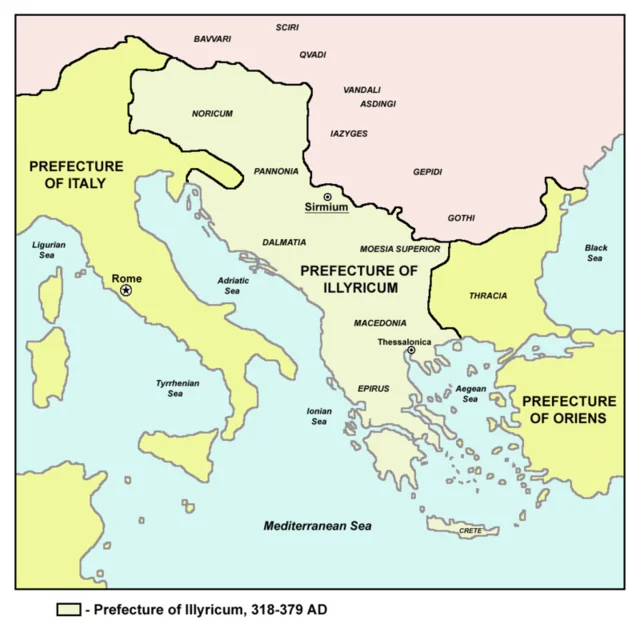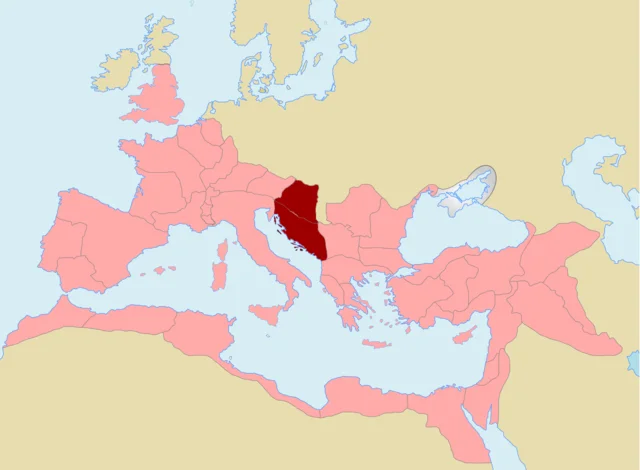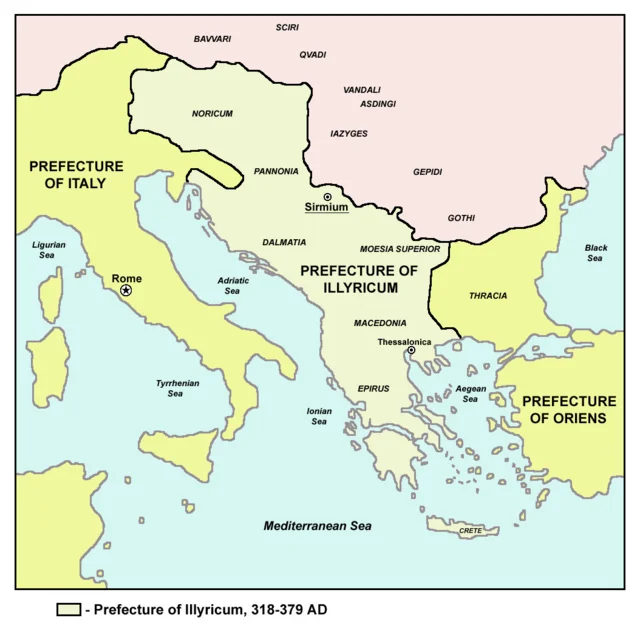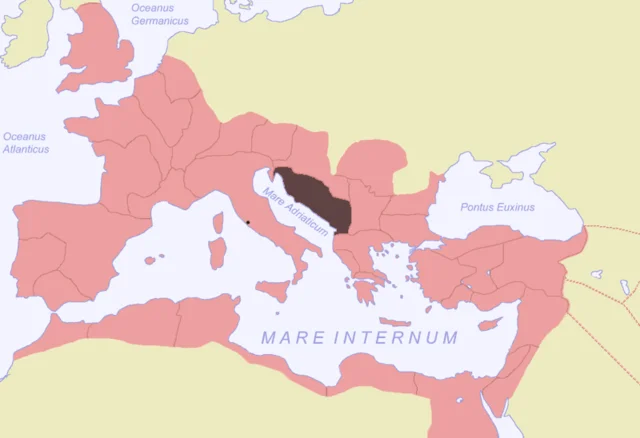Illyricum was a Roman province located in the western Balkans. It bordered the Adriatic Sea and encompassed much of what is now Croatia, Bosnia and Herzegovina, Slovenia, Montenegro, Serbia, and parts of Albania. The region played a significant role in both Roman military and administrative affairs.
Get your dose of History via Email
Geography and Early Inhabitants

Illyricum was home to the Illyrians, a group of Indo-European tribes who lived in the western Balkans. The area was mountainous and rich in natural resources, which supported a largely agrarian society. Over time, the Illyrians became known for their fierce resistance to foreign domination. Despite this, their strategic location between Italy and the Eastern Mediterranean made them a target for Roman expansion.
Roman Conquest

The Roman conquest of Illyricum began in 229 BC during the First Illyrian War. The Romans sought to curb piracy along the Adriatic coast, which was threatening Roman trade routes. After a series of conflicts, Illyricum was fully integrated into the Roman Republic by 168 BC following the Third Illyrian War. The final pacification occurred under Augustus around 9 AD, after a major revolt known as the Great Illyrian Revolt.
Administrative Structure

Under Roman rule, Illyricum was divided into two parts: Dalmatia and Pannonia. Dalmatia covered the coastal regions, while Pannonia was inland. Both regions were crucial for Rome’s military strategy due to their proximity to hostile tribes and the Danube River, a vital frontier. The province was also an essential source of soldiers, as many Illyrians were conscripted into the Roman legions.
Economic Importance

Illyricum’s economy thrived under Roman administration. The region was rich in natural resources, including silver, gold, and timber. These resources were exploited by the Romans and contributed to the empire’s wealth. Illyricum also became a key agricultural region, supplying grain, livestock, and wine to the Roman Empire. Additionally, its location made it a crucial transportation hub for moving goods and troops between Italy and the Eastern provinces.
Military Role
Illyricum played a critical role in Roman military strategy. It served as a buffer zone between the Roman Empire and various barbarian tribes to the north. The province was heavily militarized, with numerous forts and garrisons stationed along its borders. The Roman legions stationed in Illyricum played a key role in defending the empire’s frontiers and in campaigns against Dacians, Sarmatians, and other tribes.
Decline and Legacy
By the late 3rd century AD, the Roman Empire began to struggle with internal and external pressures. Illyricum faced invasions from Gothic and Hunnic tribes, weakening the region’s stability. Eventually, the province was reorganized under Emperor Diocletian around 285 AD, and the region’s administration changed. Despite its decline, Illyricum continued to influence the Balkans long after the fall of the Western Roman Empire in AD 476.
The legacy of Illyricum is evident in the region’s historical identity. Many modern nations in the Balkans trace their cultural and historical roots to the ancient Illyrians. Furthermore, Illyricum’s role in Roman military and administrative systems played a part in shaping the broader Roman Empire.
Conclusion
Illyricum was a province of strategic importance to Rome. It provided resources, soldiers, and a crucial buffer zone for defending Roman territories. Although it faced challenges during its time as a Roman province, its legacy continues to impact the history and culture of the Balkans today.
Source:

